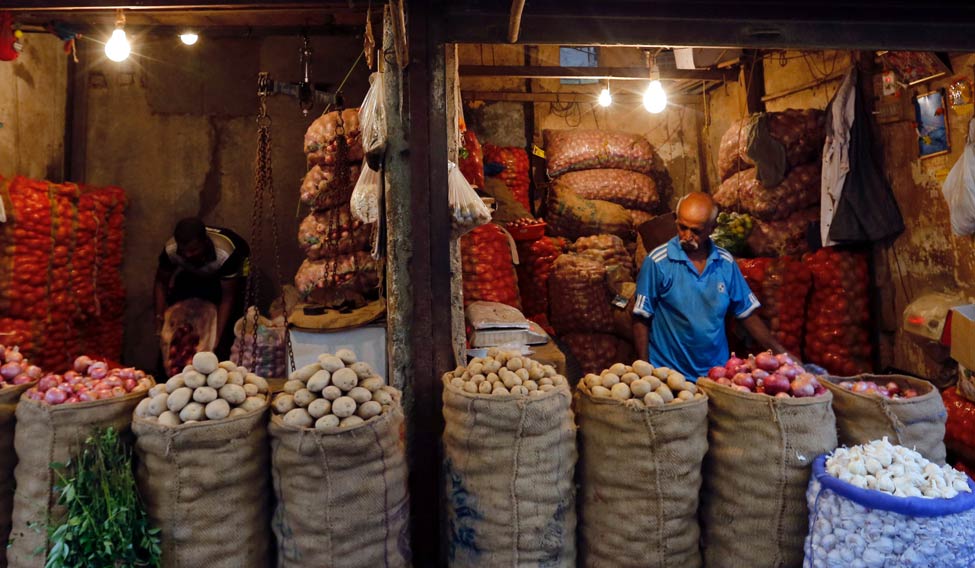Will interest rates remain unchanged for longer or maybe even go up next year as inflation has surged, or should they be cut more as industrial activity remains patchy? India's macro-economic data released this week, was largely disappointing and sent mixed signals, say economists.
It has been widely forecasted for some time now that inflation will pick up in the second half of this fiscal year, ending March 2018. But, what surprised on Tuesday was the pace, consumer price index (CPI) or retail inflation saw its fastest month-on-month increase to a fifteen month high of 4.88 per cent in November from 3.58 per cent in October. The surge was mainly on the back of a sharp rise in food and fuel prices.
Vegetable prices, for instance, shot up more than 22 per cent year-on-year in November. Similarly, fuel prices have continued to inch up, rising 7.9 per cent last month.
Furthermore, the rise in core inflation (CPI excluding, food and fuel), even adjusting for house rent, suggests broad-based price pressures continue even as the GST effects have faded, economists commented.
The RBI left key interest rates on hold in its bi-monthly monetary policy review last month on inflationary concerns, and the latest retail inflation figures will sort of vindicate the central bank's stand, said Madan Sabnavis, chief economist at CARE Ratings.
RBI expects CPI inflation to be in a range between 4.3 per cent to 4.7 per cent in the third and fourth quarter of the fiscal year.
“Food price inflation pressures have sustained in December owing to unseasonal rains, and even as vegetable prices will likely reverse in the first quarter, we expect higher food prices, the cyclical recovery and higher oil prices to keep inflation above the RBI’s 4 per cent target through 2018,” said Sonal Varma, chief India economist at Nomura Securities.
Kotak Securities economist Upasna Bhardwaj expects retail inflation to hit 5 per cent in December, and sees the upward trend continuing with inflation in the range of 5 per cent to 6 per cent in the first half of 2018.
The rising inflation trajectory, economists suggest, would make RBI extremely watchful over the next few months and therefore maintain a status quo on interest rates, even though some of the other economic parameters like manufacturing data remain uneven.
Index of Industrial Production (IIP) growth slowed down to 2.2 per cent in October, from an upwardly revised growth rate of 4.1 per cent in September, raising questions on the sustainability of a broad-based pickup in economic activity. The GDP growth recovered to 6.3 per cent in July-September from a three-year low of 5.7 per cent in April-June.
As far as IIP is concerned, capital goods posted third consecutive positive growth, signalling early signs of stabilising investment activity, infrastructure and construction sectors also grew at a 10-month high. However, consumer durables growth has contracted, mining activity saw a sharp slowdown and manufacturing production also contracted after positive growth, last two months.
“The expected uptick in production on account of either restocking or meeting enhanced demand has not happened, except in pockets like pharma and auto sectors,” said Sabnavis of CARE.
He further added that consumer demand also did not give the impression of being buoyant and the next two months would be crucial to judge whether there was any movement away from the low trends witnessed thus far.
The weak IIP data does not surprise Nomura's Varma, who feels it has got more to do with “transitory” factors.
“Growth is largely evolving as per expectations and high frequency data suggest that industrial output growth should rebound in November. We expect GDP growth to rise to 6.7 per cent in fourth quarter from 6.3 per cent in third quarter, before rebounding to 7.5 per cent in 2018,” said Varma.
The slowdown in IIP growth, may not be too big a worry for RBI as broader economic growth is largely expected to recover over the next few quarters. However, the sharp rise in inflation does raise concerns over possible interest rate rise next year, say economists.
“Despite the weak IIP print, overall high frequency data have been pointing towards a gradual cyclical recovery. Inflation trajectory remain on an adverse upward trend, thereby putting an end to any minimal chance of a rate cut. Inflation out turns in the first half of 2018 will be crucial in assessing the next move of the RBI (and possibly the first signs of rate hike),” said Kotak's Bhardwaj.
Not just inflation, but other developments will also weigh on RBI's moves. For instance, major global central banks have started reversing their easy money policies. The US Federal Reserve is expected to raise interest rates further this month. Domestically, there will also be a close watch on whether the government manages to keep its fiscal deficit in check. The fiscal deficit had already touched the 96 per cent of the targeted 3.2 per cent in the first seven months of the current fiscal.
“Effectively, we see no space for further easing or rate cuts. In fact, the central bank might adopt a relatively hawkish tone in the months ahead. We can't rule out the possibility of policy reversal during next fiscal,” said Hitesh Jain, associate vice president – research , IIFL Wealth Management.






